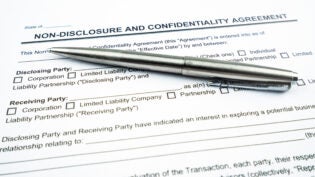
A clear desk leads to a clear mind, which leads to high productivity and laser focus. When you look at your workspace, what do you see? Is it clear and organized, prompting you to begin your most important tasks? Or is it cramped and cluttered, overflowing with printed reports, unopened mail, and an array of sticky notes? The answer might say a lot about how much you get done.
Many people have come to think of a disorganized area as the sign of a busy person who is getting lots of things done. Others think the condition of their desk is inevitable based on their personality. While you might lean one way or the other because of your personality, the truth remains. A messy desk invites your mind to wander. No matter what you are doing, your attention is subconsciously pulled this way and that, wondering, “What should I do with that thing?” and “When will I get to those?” Clean desks, on the other hand, lead to productivity and concentration by encouraging you to finish whatever you’re working on at the moment.
Regardless of your job or personality, here are some tips to keep your desk free of distractions:
One Touch. Dealing with the same file or piece of mail repeatedly is a waste of time. When something arrives to your desk, decide whether to file it, act on it, or throw it away the first time. Just touch it once.
Tickler file. This idea measurably changed my productivity and effectiveness. A tickler file is where you put paper you need to take action on in the future. To set up this system, clear out one part of a file desk drawer. Put in 12 hanging folders, labeled for each month of the year. Then label manila folders 1-31 to represent the possible days in a month. Put these 31 manila folders inside the current month’s hanging folder. Now, file everything on your desk into the day or month that you want to deal with it. Each day move that day’s empty folder to the next month’s hanging file. When you get to the end of a month, move that hanging folder to the back of the file, so it can function again in the following year.
For example, if it were March 15th, you would have March’s hanging folder in the front of your file with manila folder days 15 to 31 in order inside of it. (Days 1-14 would be inside April’s hanging folder.) When you get to the office, pull out the manila folder numbered 15 and find exactly what you have to do that day. Then place that folder behind folder number 14 in April. The great time saver is this: If I discover a task that doesn’t need to be addressed until a later date, then I put it in the day or month I decide I want to see it again. I don’t have to think about it or try to remember to do it because it will pop up exactly when I want it to. You get to decide when you want to take action.
Another benefit I like is the ability to look at the next few days and re-file or deal with urgent matters—should you need to clear your schedule for a few days. Build your tickler system in a way that works best for your particular needs. Some people find it simpler to label their manila folders for each week instead of each day which would use just four of them each month. In that case you can just check the folder at the beginning of the week. Some people might find it necessary to have two months of numbered manila day folders.
To keep your desk perfectly clear, you may need to add a few additional hanging files. My extra files include Receipts, Things to Read, and Things to File. “Things to file” holds papers I file in other filing systems at the end of each month. “Things to Read” gives me a place to throw magazines and newsletters I can pull out when I know I’ll be sitting in the airport with extra time. Think of what additional files you need and create a spot for them. Now, everything on your desk should have a place to be filed. You just need to get in the habit of checking the tickler file each morning.
Clean up your office. Naturally, it’s easier to keep your desk clean if your office isn’t overflowing with unaddressed paperwork or other distractions. It reminds me of treading water. It’s hard enough to tread water when the sea is calm. It’s very hard to keep afloat when there are sharks swimming around you. Keep the sharks at bay. Figure out how much time you need each day or each week to maintain a sense of order in your office. You will be able to do your job so much more efficiently. A messy desk or office isn’t the sign of a busy professional; it’s the sign of a disorganized one. Make it clear to yourself and others that you want to concentrate and work hard by keeping your space organized for that purpose.
This article was originally published by David Horsager
Published: May 12, 2014
2783 Views
2783 Views











